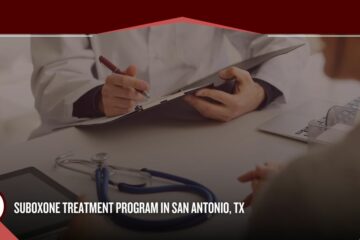As addiction treatment experts, we always strive to offer comprehensive, holistic, and thorough San Antonio rehab programs. In our commitment to excellence, we recognize the pivotal role of substance abuse recovery capital in achieving optimal outcomes. Unfortunately, this concept is often misunderstood and overlooked. At Alamo Behavioral Health, we fully embrace the principles of recovery capital and integrate them across all our programs. That’s why we aim to shed light on the significance of substance abuse recovery capital and its impact on the recovery process. Join us as we explore the intricacies of recovery capital and its transformative potential.
What Is Substance Abuse Recovery Capital?
Substance abuse recovery capital encompasses a range of resources that individuals can draw upon to support their journey toward recovery. On the whole, recovery capital offers numerous benefits that can greatly enhance the journey of individuals in substance abuse recovery:
- Firstly, it provides individuals with a diverse range of resources and support systems, strengthening their ability to overcome challenges and maintain long-term sobriety.
- Secondly, recovery capital also fosters resilience as individuals develop personal qualities, skills, and support networks that enable them to navigate triggers, setbacks, and temptations effectively.
- And thirdly, recovery capital promotes holistic well-being, addressing physical, emotional, and social needs, which contribute to a higher quality of life in recovery. It empowers individuals to take ownership of their journey, fostering a sense of agency, self-worth, and self-efficacy.

Initially, as NAADAC notes, recovery capital was understood to consist of physical, social, human, and cultural dimensions. However, further advancements in the field have highlighted additional types of recovery capital. These include financial, environmental, and more, as we will see next. By recognizing and developing these diverse forms of recovery capital, individuals can create a solid foundation for sustained recovery, bolstering their resilience, motivation, and ability to navigate the challenges of addiction.
Types of Substance Abuse Recovery Capital
With the above in mind, here we can explore the 6 main types of recovery capital. In no particular order, consider the following and how each can augment the recovery journey:
- Physical
- Social
- Human
- Cultural
- Financial
- Environmental
#1 Physical Recovery Capital
Physical recovery capital encompasses the tangible and physiological resources that contribute to an individual’s recovery from substance abuse. It refers to the state of one’s physical well-being, including good health, proper nutrition, and regular exercise.
Since addiction often takes a toll on the body, these physical resources play a crucial role in supporting recovery. For instance, good health enables individuals to withstand the physical and emotional challenges of withdrawal and rehabilitation better. Restoring physical health during rehabilitation actively enhances physical recovery capital in this sense. Proper nutrition and regular exercise also contribute to overall well-being, boosting energy levels, enhancing mood, and aiding in physical recovery. This is why virtually every alcohol detox program Texas offers will include dietary guidance and physical therapy as needed.
#2 Social Recovery Capital
Social recovery capital encompasses the network of relationships, social support, and communal resources that contribute to an individual’s recovery from substance abuse. This type of substance abuse recovery capital refers to the social resources available to individuals, including group memberships, support networks, and connections within the recovery community.

Understandably, these social resources play a vital role in supporting the recovery journey. For instance, being a part of a recovery support group provides a sense of belonging. In turn, it fosters a supportive environment where individuals can share experiences, receive encouragement, and gain valuable insights. Group therapy in Texas hinges strongly on the individual’s ability to socialize, share their experiences, and ultimately emerge stronger and sober.
Strong social bonds and relationships also help reduce feelings of isolation and loneliness, which are common triggers for relapse. Indeed, socialization and engagement with others who are also in recovery can offer valuable role models and provide a sense of accountability. By cultivating social recovery capital, individuals can access the emotional support, guidance, and understanding necessary for maintaining motivation, resilience, and ongoing recovery.
#3 Human Recovery Capital
A newer term, if not a new type per se, human recovery capital refers to the personal qualities, knowledge, skills, and attributes that individuals possess and utilize in their journey of recovery from substance abuse. It encompasses a wide range of human resources that contribute to an individual’s ability to overcome addiction and maintain long-term sobriety.
Examples of human recovery capital include:
- Personal values that align with recovery principles
- Educational and vocational skills and credentials that enhance employability and future prospects
- Problem-solving capacities that aid in navigating challenges
- Self-awareness, self-esteem, and self-efficacy that foster personal growth and resilience
Naturally, this type of substance abuse recovery capital has a profound impact on the recovery journey. It empowers individuals to make informed decisions, set meaningful goals, and develop the necessary tools to address triggers, cope with stress, and build a fulfilling life in recovery. It opens them up to individual therapy in Texas and beyond, increasing the likelihood of complete rehabilitation. By recognizing and cultivating their human recovery capital, individuals can enhance their self-worth, confidence, and self-belief, thereby facilitating a successful and sustainable path to recovery.

#4 Cultural Recovery Capital
Cultural recovery capital is another established type. It refers to the values, beliefs, and practices within a specific cultural context that support and facilitate the recovery process from substance abuse. It encompasses the cultural assets and strengths that individuals draw upon to navigate their journey toward sobriety.
Examples of cultural recovery capital include:
- Placing value on self-sufficiency and personal responsibility
- Valuing resilience and the ability to overcome adversity
- Promoting communal bonds and a sense of belonging
- Embracing openness and acceptance of diverse pathways to recovery
In turn, cultural recovery capital plays a significant role in shaping the recovery journey. It provides individuals with a sense of identity, belonging, and purpose as they align their recovery efforts with cultural values and traditions. Cultural assets foster a supportive environment where individuals can find validation, connection, and understanding among their peers. By embracing and leveraging cultural recovery capital, individuals can tap into the collective wisdom and strength of their cultural heritage, strengthening their motivation, resilience, and commitment to long-term recovery.
#5 Financial Recovery Capital
One of the most notable types of substance abuse recovery capital, in practical terms, is financial recovery capital. This refers to the economic resources and assets that contribute to an individual’s recovery from substance abuse. It encompasses the financial stability and resources that enable access to necessary treatment, support services, and a stable living environment.
A fitting example of financial recovery capital would be a steady income that supports basic needs and sustains healthy lifestyles. Another would be having savings or financial resources to fund extensive rehabilitation programs or therapies and having access to health insurance that covers addiction treatment and mental health services.

Practically speaking, financial recovery capital plays a fundamental role in the recovery journey. Rehabilitation, from the shortest programs for marijuana detox Texas offers to extensive heroin rehab, tends to cost considerably. As such, financial recovery capital provides individuals with the means to seek appropriate professional help, afford medications, attend therapy sessions, and access comprehensive treatment programs.
In addition, financial stability reduces the stress and anxiety associated with financial insecurity. In doing so, it allows individuals to focus on their recovery without the added burden of financial concerns.
#6 Environmental Recovery Capital
Lastly, a commonly overlooked but equally significant type of substance abuse recovery capital comes in environmental recovery capital. This refers to the external factors and resources within an individual’s surroundings that contribute to their recovery from substance abuse. It encompasses the supportive elements of the physical and social environment that facilitate the recovery process.
Examples of environmental recovery capital include:
- Familial support and a nurturing home environment
- Proximity to rehab services and support groups
- Access to options such as telehealth rehab services for remote or flexible treatment
Understandably, then, environmental recovery capital plays no less significant role in the recovery journey than any other type. A supportive and understanding family environment can provide a stable foundation for recovery, offering emotional support, accountability, and a safe space for growth. Having access to rehab services nearby or through telehealth, like many a drug detox program Texas offers now embrace as an approach to treatment, eliminates barriers to treatment and enhances the availability of support. A recovery-friendly community with resources and support groups fosters connection, reduces isolation, and provides opportunities for individuals to engage in meaningful recovery activities. By leveraging environmental recovery capital, individuals can create an environment that promotes and sustains their recovery, enhancing their overall well-being and increasing their chances of long-term success.

Build Recovery Capital with Alamo Behavioral Health
Substance abuse recovery capital encompasses a multidimensional framework that encompasses physical, social, human, cultural, financial, and environmental resources. Each type of recovery capital plays a vital, synergistic role in supporting individuals on their journey toward sustained recovery. As such, recognizing and cultivating these interconnected forms of capital is crucial for optimizing recovery outcomes.
At Alamo Behavioral Health, we fully embrace the principles of substance abuse recovery capital. From theory to action, we apply them across our programs to provide comprehensive support and empower individuals toward lasting recovery. By understanding and harnessing these principles, we see individuals can transform their lives and reclaim their health.
If you or your loved ones are in need of our services, please feel free to contact us today. Our teams are always available and will be more than happy to assist you in any way you need.





